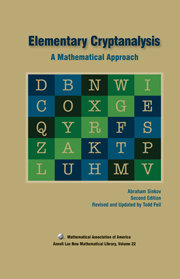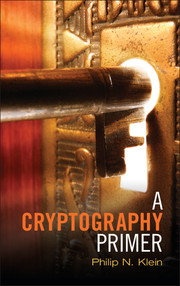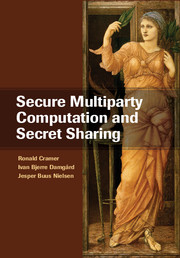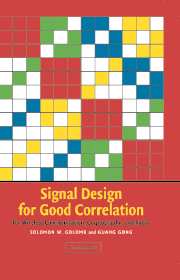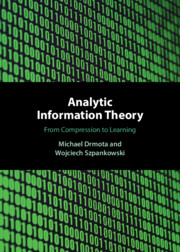Elementary Cryptanalysis
Most people, acquainted with cryptology either through sensational cloak and dagger stories or through newspaper cryptograms, are not aware that many aspects of this art may be treated systematically, by means of some elementary mathematical concepts and methods. In this introduction, Professor Sinkov explains some of the fundamental techniques at the heart of cryptanalytic endeavor from which much more sophisticated techniques have evolved, especially since the advent of computers. The mathematical topics relevant in these discussions include modular arithmetic, a little number theory, some linear algebra of two dimensions with matrices, some combinatorics, and a little statistics. This second edition has been revised and updated by Todd Fiel, and now includes discussion of the RSA method.
- Author has professional experience breaking Japanese codes in Second World War
- Suitable for self-study or course accompaniment
- Contains exercises and answers
Product details
August 2009Hardback
9780883856475
224 pages
235 × 155 × 16 mm
0.43kg
Available
Table of Contents
- Part I. Monoalphabetic Ciphers:
- 1. The Caesar cipher
- 2. Modular arithmetic
- 3. Additive alphabets
- 4. Solution of additive alphabets
- 5. Frequency considerations
- 6. Multiplications
- 7. Solution of multiplicative alphabets
- 8. Affine ciphers
- Part II. General Substitution:
- 9. Mixed alphabets
- 10. Solution of mixed alphabet ciphers
- 11. Solution of five-letter groupings
- 12. Monoalphabets with symbols
- Part III. Polyalphabetic Substitution:
- 13. Polyalphabetic ciphers
- 14. Recognition of polyalphabetic ciphers
- 15. Determination of number of alphabets
- 16. Solutions of additive subalphabets
- 17. Mixed plain sequences
- 18. Matching alphabets
- 19. Reduction to a monoalphabet
- 20. Mixed cipher sequences
- 21. General comments
- Part IV. Polygraphic Systems:
- 22. Linear transformations
- 23. Multiplication of matrices - inverses
- 24. Involutory transformations
- 25. Recognition of digraphic ciphers
- 26. Solution of a linear transformation
- 27. How to make the Hill system more secure
- Part V. Transposition:
- 28. Columnar transposition
- 29. Completely filled rectangles
- 30. Incompletely filled rectangles
- 31. Probable word method
- 32. General case
- 33. Identical length messages
- Part VI. RSA Encryption:
- 34. Public-key encryption
- 35. The RSA method
- 36. Creating the RSA keys
- 37. Why RSA works - Fermat's Little Theorem
- 38. Computational considerations
- 39. Maple and Mathematica for RSA
- 40. Breaking RSA and signatures
- Part VII. Perfect Security - One-Time Pads:
- 41. One-time pads
- 42. Pseudo-random number generators
- A. Tables
- B. ASCII codes
- C. Binary numbers
- D. Solutions to exercises
- Further readings
- Index.

